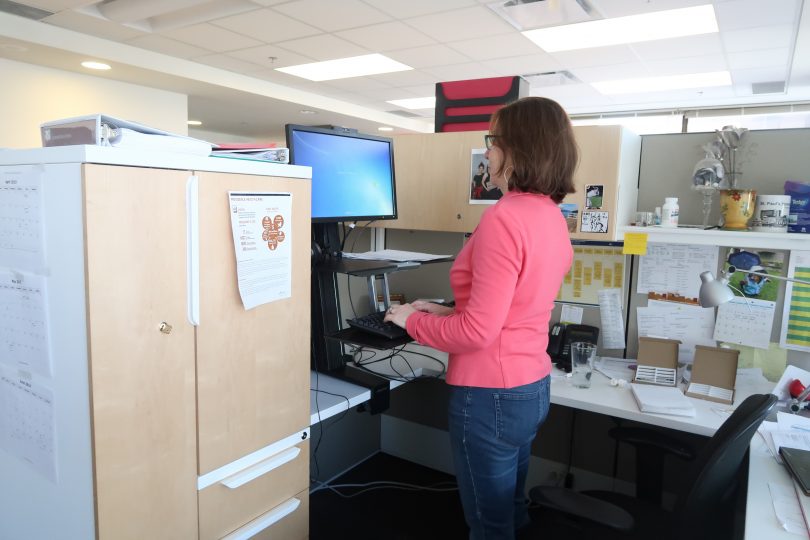The secret is to move, says Dr. Scott Lear
A lot of us do it. And we do it almost all the time. You’re probably doing it right now. It’s sitting. We can’t avoid it whether in our jobs or doing tasks at home. The thing is, we should all be doing less of it. Sitting increases one’s chances for getting heart disease, cancer and diabetes, and even dying earlier. It has been reported that for every two hours of TV viewing, the chances for diabetes increases by 20%, for heart disease by 15% and for early death by 13%.
The longer we sit, the less our muscles move, and therefore require less energy (sugars and fats), as a result certain enzymes are shut down leaving those sugars and fats to circulate in our blood stream. Higher levels of blood sugars and fats are risk factors for diabetes and heart disease. These effects can even last into the next day.
We even need a break from our standing desks
Many people have turned to using standing desks in order to sit less. This at first sounds reasonable. If sitting is bad for you, then certainly anything but sitting is good for you. While standing does burn about 9 calories more per hour than sitting, standing for long periods also comes with its own health issues. People who have jobs that required long periods of standing had higher chances of getting heart disease. In addition, standing for long periods may lead to back pain, and can increase risk for varicose veins.
Certain tasks, such as computer use or other fine work like drawing are easier done while sitting. Standing doing these activities can lead to greater muscle and skeletal fatigue.
Movement is the key to good health
In the end, it’s not that sitting, or even standing, is in itself bad. There are plenty of times where we need to do one or the other. It’s going for long periods of not moving that is the problem, whether one is sitting or standing. During these periods, our body shuts down to a low idle and is no longer working efficiently.
The good news is that even getting up and walking around for as little as two minutes every 20 minutes over a five hour sitting period has been shown to reduce blood sugars by more than 20% compared to continuous sitting.
Moving about can be as simple as setting your phone or computer to alarm every 20-30 minutes to remind you to get up and take a walk. It could be going to the water cooler, using a printer further away or even walking down the hall to talk to a colleague instead of sending that email. Besides improving your health, this may also help fight off any fatigue that prolonged sitting may result in and improve your daily productivity.
Follow Dr. Scott Lear’s blog at www.drscottlear.com to learn more on healthy living.





